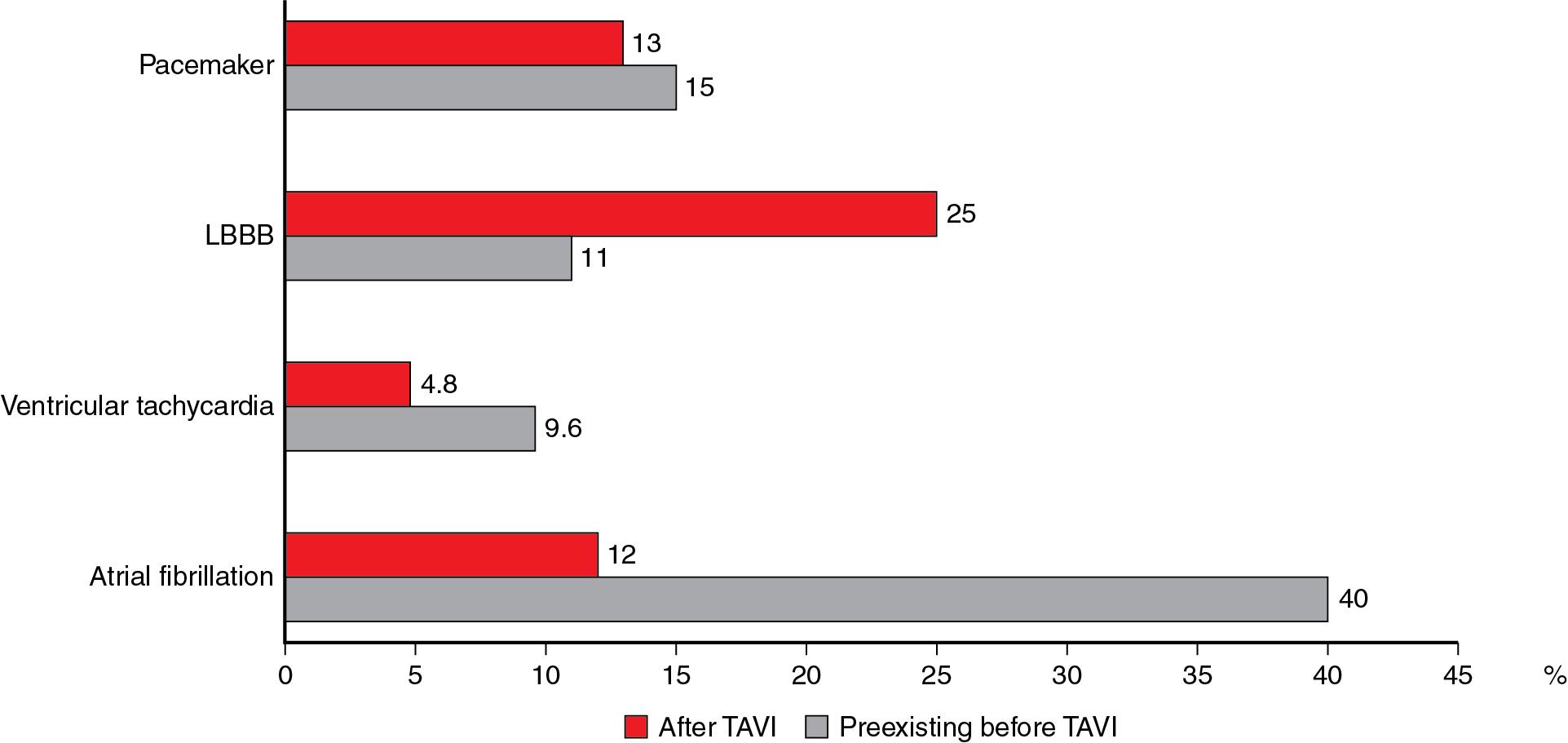Physical Address
304 North Cardinal St.
Dorchester Center, MA 02124
Although most complications of transcatheter aortic valve implantation (TAVI) have decreased over time, the rate of arrhythmic complications and conduction abnormalities seems to remain stable. Indeed, the introduction of newer-generation devices has not resulted in a reduction of these complications, which remains the main limitation of TAVI compared with surgery. This chapter highlights key data regarding arrhythmias and pacemaker implantation associated with TAVI.
Atrial fibrillation (AF) is the most common arrhythmia worldwide. As for aortic stenosis, its prevalence increases with age, with a prevalence >10% in individuals >80 years old. Both aortic stenosis and AF share physiopathologic mechanisms.
AF is frequently encountered in TAVI candidates with reported rates varying from 16% up to 51% across studies.
New-onset AF is observed in 1% to 32% of patients after TAVI, with wide variations across studies depending on the definition of AF (mainly duration of episodes) and the most used TAVI ( Fig. 14.1 ).

New-onset AF is more frequently encountered in patients undergoing transapical TAVI than in transfemoral TAVI recipients (≈5% in the last series).
Transapical TAVI seems to be associated with a similar risk of new-onset AF than surgical aortic valve replacement (up to 40% at 30 days) because of the need for pericardiotomy and the inflammatory response associated with the procedure.
The rate of new-onset AF is thought to depend on age, New York Heart Association (NYHA) classification, the size of the left atrium, the left ventricular ejection fraction, chronic pulmonary disease, and the occurrence of complications.
Importantly, studies on patients receiving a cardiac electrocardiogram (ECG) monitor after TAVI have confirmed a persistent risk of new-onset AF within the first 2 years after the procedure, suggesting the need for close follow-up in these patients.
Despite discordances between studies, both preexisting AF and new-onset (paroxysmal or persistent) AF is thought to be associated with an increased risk of stroke, bleeding, heart failure hospitalizations, 30-day pacemaker, and death within the first year after the intervention.
TAVI candidates are at high risk of stroke in the presence of AF. Several studies have suggested that patients with new-onset AF should received anticoagulation therapy on diagnosis. The best anticoagulation therapy remains unknown.
Recent data suggest that compared with vitamin K antagonists (VKAs), non–vitamin K antagonist oral anticoagulants (NOACs) might be associated with lower long-term all-cause mortality. This finding needs to be confirmed in future randomized studies.
Which patients should also receive an antiplatelet agent is debatable given the high risk of bleeding of TAVI candidates and the association between bleeding events and death. Several authors have advocated for the systematic use of left atrium appendage closure in these patients, but this is not currently recommended.
At present, no evidence supports the superiority of this strategy over the use of anticoagulation therapy in this particular population.
Aortic stenosis itself is associated with ventricular arrhythmias. Nonetheless, the occurrence of sustained ventricular arrhythmias during the procedure is infrequent (see Fig. 14.1 ). Indeed, it has been suggested that ventricular arrhythmias may decrease after TAVI. However, they may occur after the insertion of the stiff wire or rapid pacing, particularly in patients with a substrate for a ventricular arrhythmia such as coronary artery disease.
After the procedure the occurrence of ventricular arrhythmias remains uncommon, mainly due to preexisting cardiac disease, and their incidence appears to decrease over time.
Become a Clinical Tree membership for Full access and enjoy Unlimited articles
If you are a member. Log in here